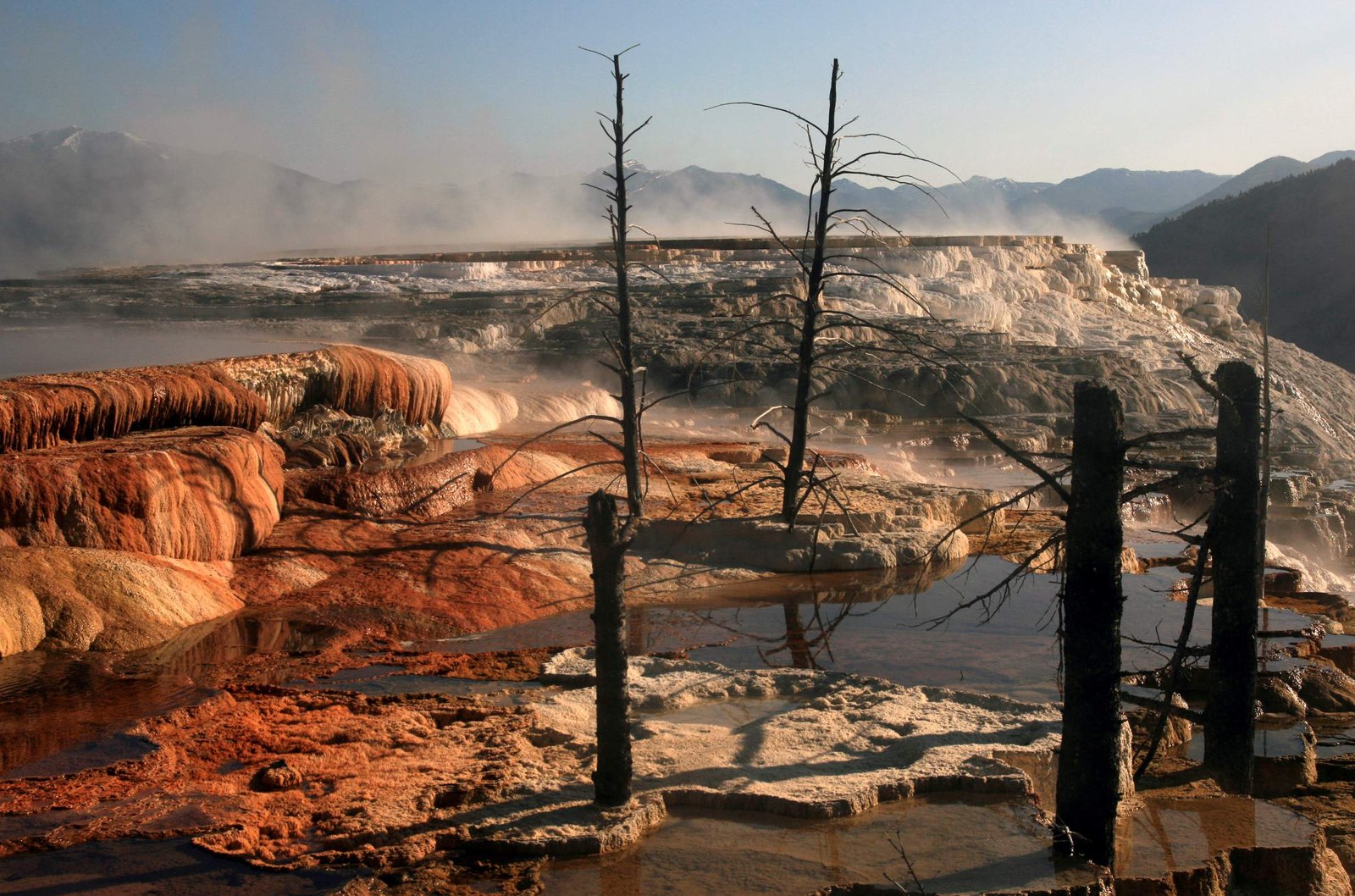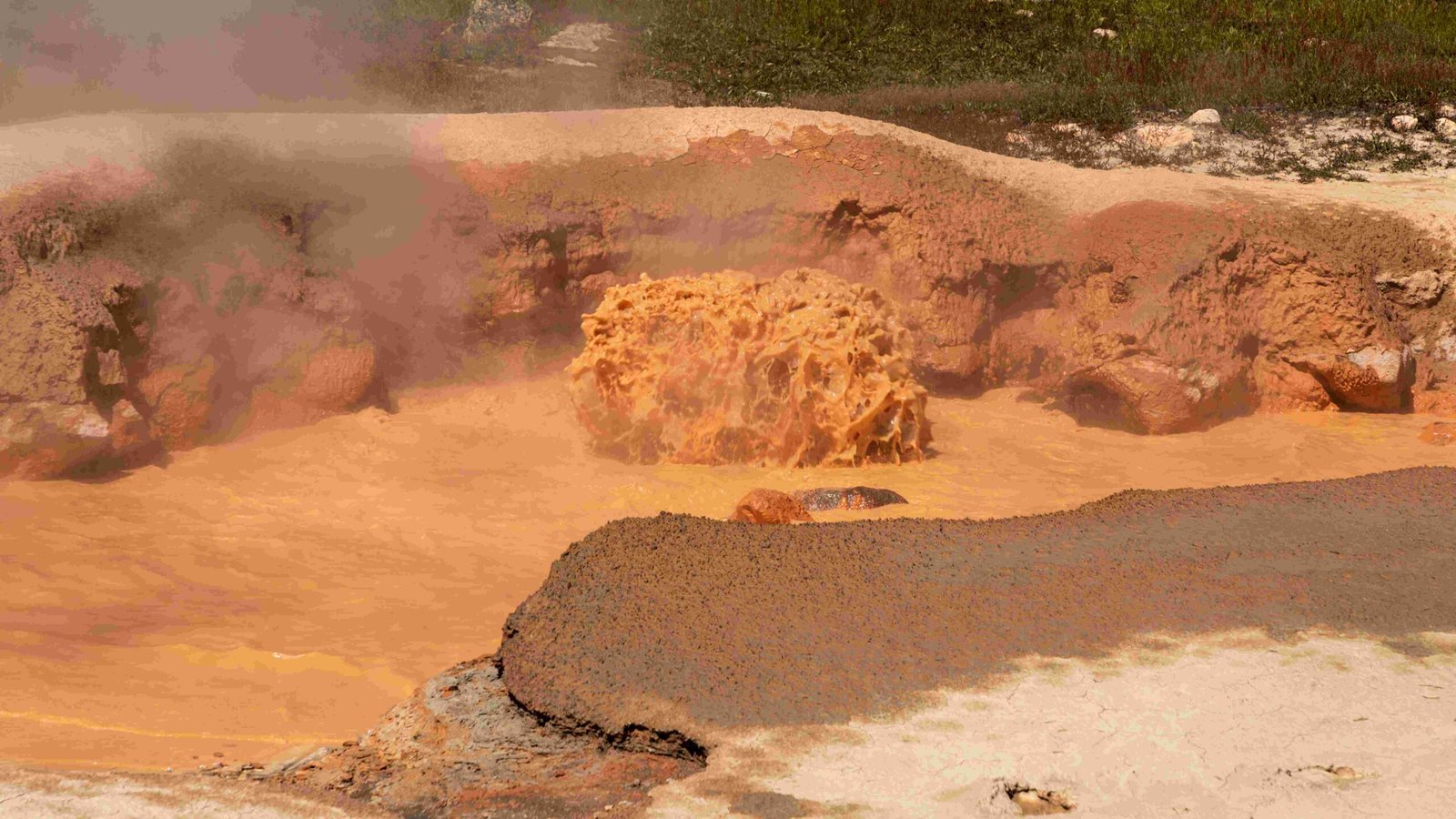Yellowstone National Park is renowned for its diverse and spectacular water features, including geysers, hot springs, waterfalls, and rivers. These natural wonders attract millions of visitors annually, offering unique geological and ecological experiences. From the iconic Old Faithful geyser to the mesmerizing Grand Prismatic Spring, Yellowstone’s water features showcase the park’s geothermal activity and pristine wilderness.
What Are the Most Famous Geysers in Yellowstone?

Yellowstone National Park is home to the world’s largest concentration of geysers, with over 500 active ones. Here are some of the most notable:
Old Faithful Geyser
- Location: Upper Geyser Basin
- Eruption Interval: 60-110 minutes
- Eruption Duration: 1.5-5 minutes
- Eruption Height: 106-185 feet (average 145 feet)
- Water Temperature: 204°F (95.6°C) at the vent
Castle Geyser
- Location: Upper Geyser Basin
- Eruption Interval: Every 10-12 hours
- Eruption Duration: 20 minutes (main eruption)
- Eruption Height: Up to 90 feet
Grand Geyser
- Location: Upper Geyser Basin
- Eruption Interval: Every 6-15 hours
- Eruption Duration: 9-16 minutes
- Eruption Height: 140-200 feet
What Makes Yellowstone’s Hot Springs Unique?

Yellowstone’s hot springs are known for their vibrant colors and unique mineral compositions. Here are two of the most famous:
Grand Prismatic Spring
- Location: Midway Geyser Basin
- Temperature: 160°F (71.1°C) in the center
- Notable Features: Vibrant colors due to microorganisms and minerals
- Accessibility: Boardwalk access with nearby parking and restrooms
Mammoth Hot Springs
- Location: Mammoth Hot Springs area
- Temperature: Around 160°F (71.1°C)
- Notable Features: White travertine formations
- Accessibility: Network of boardwalks and trails, visitor center nearby
What Are the Most Impressive Waterfalls in Yellowstone?
Yellowstone boasts numerous waterfalls, with the following two being the most renowned:
Lower Yellowstone Falls
- Height: 308 feet (94 meters)
- Flow Rate: 5,000-11,000 cubic feet per second
- Best Viewing Points: Lower Falls Viewpoint, Brink of Lower Falls Trail
- Hiking Trails:
- Brink of Lower Falls Trail (3/4 mile, strenuous)
- Lower Falls Viewpoint (short, easy walk)
Upper Yellowstone Falls
- Height: 109 feet (33 meters)
- Best Viewing Points: Upper Falls Viewpoint, Brink of Upper Falls Trail
- Hiking Trails:
- Brink of Upper Falls Trail (short but steep, moderate to strenuous)
- Upper Falls Viewpoint (short, easy walk)
Which Major Rivers Flow Through Yellowstone?
Yellowstone National Park is home to several significant rivers, including:
Yellowstone River
- Length: 692 miles (1,114 km)
- Flow Characteristics: Clear waters, diverse fish populations
- Recreational Opportunities:
- Fishing (renowned for cutthroat trout)
- Whitewater rafting and kayaking
- Access Points: Multiple, including near Lower and Upper Falls
- Permits: Required for fishing
Madison River
- Length: 183 miles (295 km)
- Flow Characteristics: Clear waters, meandering course
- Recreational Opportunities:
- Trout fishing
- Scenic floats
- Access Points: Near West Yellowstone and along its course
- Permits: Required for fishing
How Do Yellowstone’s Water Features Contribute to Its Ecosystem?
Yellowstone’s water features play a crucial role in shaping the park’s unique ecosystem:
- Geothermal Habitats: Hot springs and geysers create specialized environments for thermophilic microorganisms.
- Wildlife Support: Rivers and lakes provide essential habitats for fish, birds, and mammals.
- Plant Diversity: Different water features support various plant communities adapted to specific conditions.
- Soil Formation: Mineral-rich waters contribute to unique soil compositions.
- Climate Influence: Large water bodies help moderate local temperatures.
What Safety Precautions Should Visitors Take Around Water Features?
When visiting Yellowstone’s water features, safety is paramount:
- Stay on designated boardwalks and trails
- Keep a safe distance from thermal features
- Do not touch or enter hot springs or geysers
- Be cautious near river banks and waterfalls
- Follow all posted signs and ranger instructions
- Carry plenty of water and sun protection
How Can Visitors Best Experience Yellowstone’s Water Features?
To fully appreciate Yellowstone’s water features:
- Plan Ahead: Research and prioritize which features you want to see.
- Timing: Visit popular sites early morning or late evening to avoid crowds.
- Guided Tours: Consider joining ranger-led programs for in-depth information.
- Photography: Bring appropriate gear for capturing the beauty of water features.
- Seasonal Visits: Experience the park in different seasons for varied perspectives.
- Respect Nature: Practice Leave No Trace principles to preserve the park’s beauty.
By following these guidelines, visitors can safely enjoy the magnificent water features that make Yellowstone National Park a truly unique and awe-inspiring destination.

